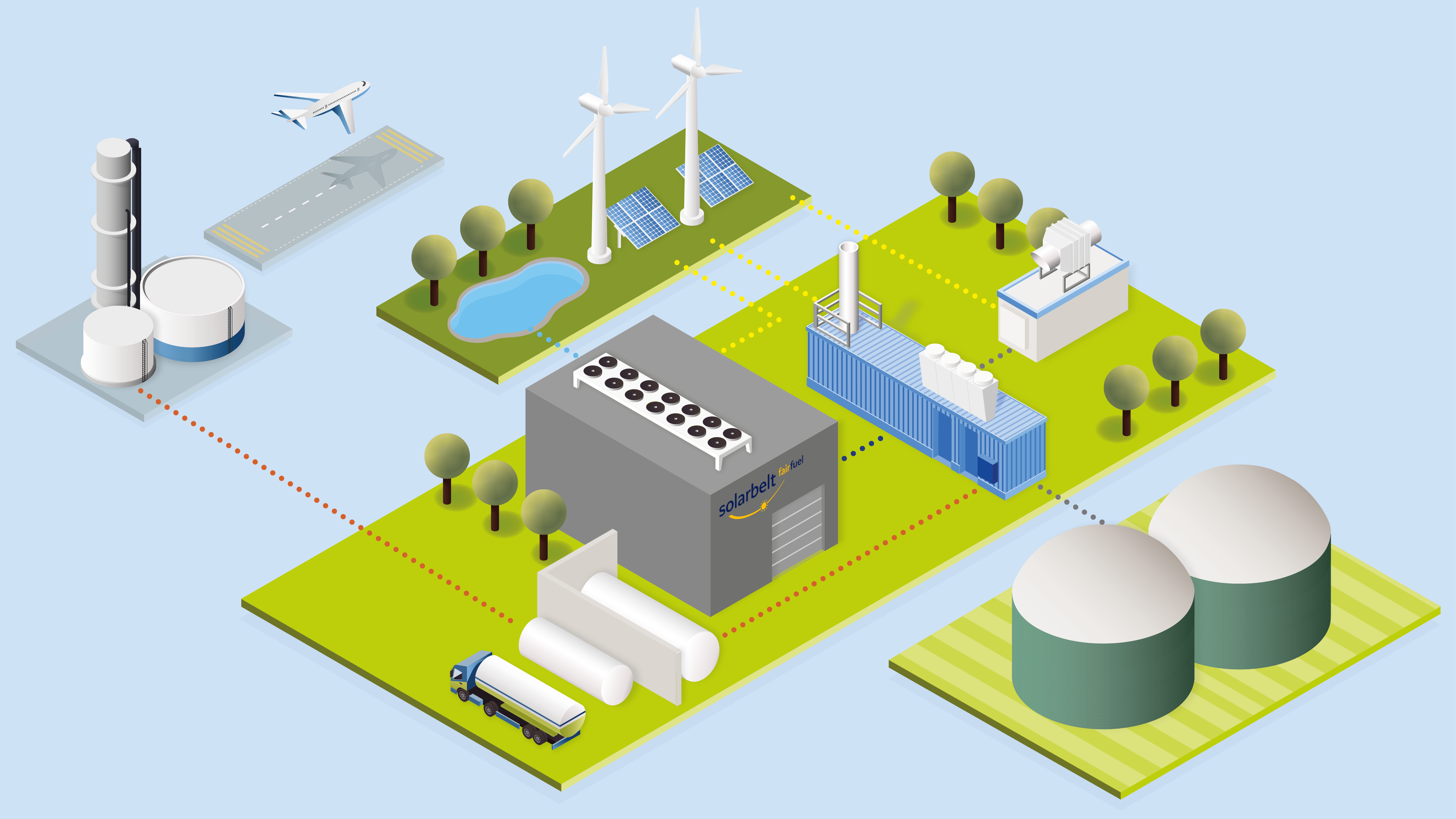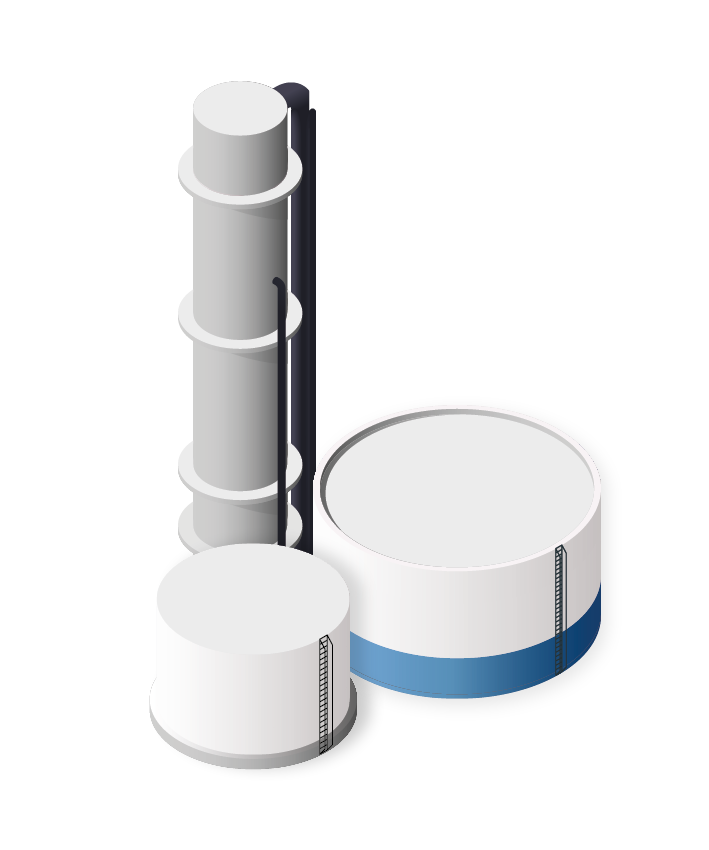

Electricity from renewable sources
The electricity for our plant comes exclusively from renewable sources and does not compete with the energy transition to renewables.
The electricity for our plant comes exclusively from renewable sources. For our fairfuel plant, we only use electricity from wind turbines and solar installations in the surrounding area. The plants no longer receive any subsidies under the German feed-in act (“Energieeinspeisegesetz”) and would be taken off-grid if we did not buy the electricity the produce because they are not profitable without subsidies. By extending the economic life of the plants, we ensure that our fairfuel production does not compete with the energy transition or the shift in electricity production away from coal and gas to renewable sources.
Air capture module
This module extracts carbon dioxide directly from the atmosphere in a very energy-intensive process.
To render fuel carbon neutral, the amount of CO2 emitted during a flight must first be removed from the atmosphere. Direct air capture is one way to do this. It relies on filters to directly remove CO2 from the atmosphere. Since the concentration of CO2 in the air is low, this process is much more energy and raw material intensive than CO2 extraction at a point source Direct air capture provides about 2.3% of the CO2 needed at our plant.


Biogas plant
The on-site biogas plant produces carbon dioxide in concentrated form as a waste product, which we use as a source for the synthesis of e-fuel.
When organic material decomposes in a biogas plant, relatively high concentrations of CO2 are produced along with methane, which is normally released into the atmosphere. We use this carbon dioxide as a raw material for our fairfuel production. The carbon contained in this CO2 was sequestered in plants via photosynthesis in the years prior to this. This means it is still carbon neutral when used as fuel.
Electrolyser
In the electrolyser, electricity is used to produce hydrogen from water.
Besides carbon, hydrogen is the second main component in the production of synthetic fuels. electrolysis is used to produce hydrogen with electrical energy from water. Our electrolyser relies on a membrane surrounded by water which uses electricity to separate H2 and O2 (Proton Exchange Membrane – PEM). The plant was built by Siemens Energy.


Fischer-Tropsch synthesis
In this step, carbon and hydrogen are synthesised into hydrocarbons, the raw material for the refinery.
The synthesis plant converts carbon dioxide and hydrogen into synthesis gas, which is then used to produce synthetic crude oil, the primary product for atmosfair fairfuel. This is achieved with the Fischer-Tropsch process, which was developed by the German chemists Franz Fischer and Hans Tropsch in the 1920s. At 150°C to 300°C long-chain hydrocarbons are formed in the presence of metal catalysts, which are processed into kerosene in a refinery.
Refinery
In the refinery, the synthetic hydrocarbons are processed into kerosene and supplied to the airport as fuels.
atmosfair fairfuel is processed into kerosene at the Heide refinery and then supplied to the Hamburg Airport, where it reduces the use of kerosene from fossil crude oil.
